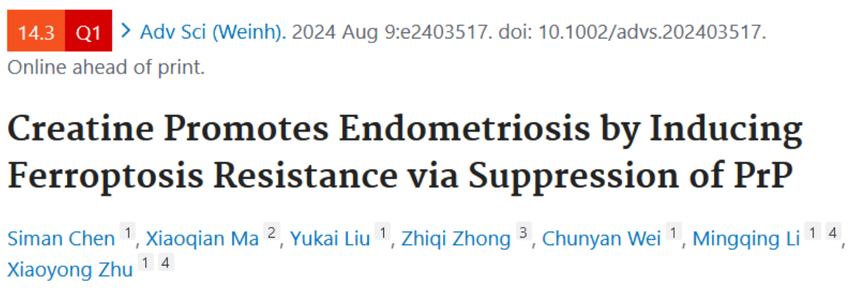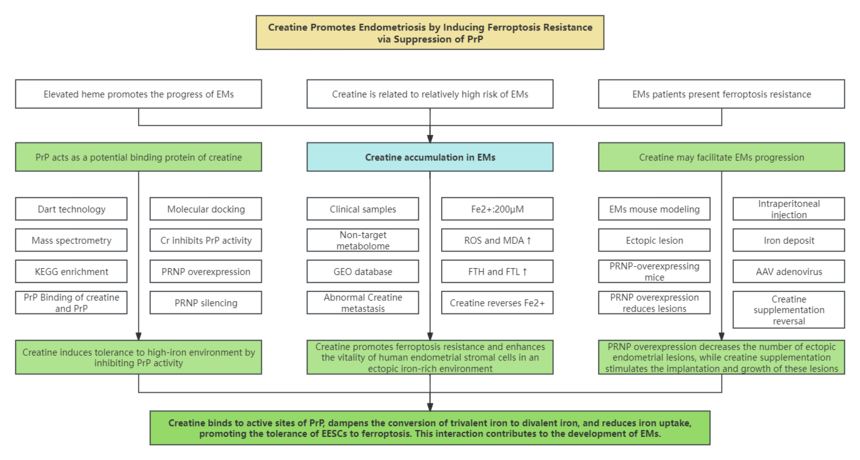Please click the button below to go to our email login page
|
IF14+! Another Paper Published in Advanced Science! Xiaoyong Zhu/Mingqing Li’s Team in Fudan University Discovers a New Role of Creatine!Endometriosis (EMs) is a reproductive disease characterized by abnormal endometrial tissue located outside the uterus, which affects nearly 10% of women of childbearing age, with 30% to 50% suffering from chronic pelvic pain and/or infertility, the two main clinical symptoms.
Next, we will share a literature with a high IF of 14.3, hoping to inspire you.
1. Research background a) Menstruation retrograde theory has been widely accepted and refers to menstrual fragments flowing back into the peritoneal cavity through the fallopian tubes, leading to implantation b) Elevated heme impairs macrophage phagocytosis and induces progesterone resistance in ectopic endometrial stromal cells (EESCs), promoting EMs development. c) EESCs derived from EMs patients display resistance to ferroptosis, enabling them to survive, implant, and proliferate within the peritoneal cavity. d) Creatine is related to relatively high risk of EMs. Prion protein (PrP, gene name PRNP) is widely expressed in all cells, impacting cellular iron uptake and homeostasis.
2. Technical route
3. Research results a) Creatine enrichment and creatine metabolism disorder in EMs b) Creatine promotes ferroptosis resistance and enhances the vitality of human endometrial stromal cells in an ectopic iron-rich environment. c) PrP acts as a potential binding protein of creatine and is highly expressed in EMs. d) Creatine suppresses PRNP overexpression-induced ferroptosis in HESCs e) PRNP silencing protects cells from ferroptosis without creatine supplementation f) Creatine promotes the proliferation of ectopic lesions by inhibiting PrP in EMs mouse models
4. Conclusion This research mainly focuses on creatine accumulation of endogenous synthesis in peritoneal fluid and EESCs in EMs patients. This research found that creatine supplementation can reduce iron concentration in cells and attenuates oxidative stress and lipid peroxidation, thereby elevating cell survival rate and preventing ferroptosis under high iron conditions. The authors through DARTS method confirm PrP as the potential creatine-sensing protein. Theoretically, creatine can bind to active sites of PrP and suppress iron conversion, thus promoting the tolerance of EESCs to ferroptosis. Besides, the new association between creatine and ferroptosis provides new insights into the role of creatine in the progression of EMs and highlights its potential as a therapeutic target for EMs. |


